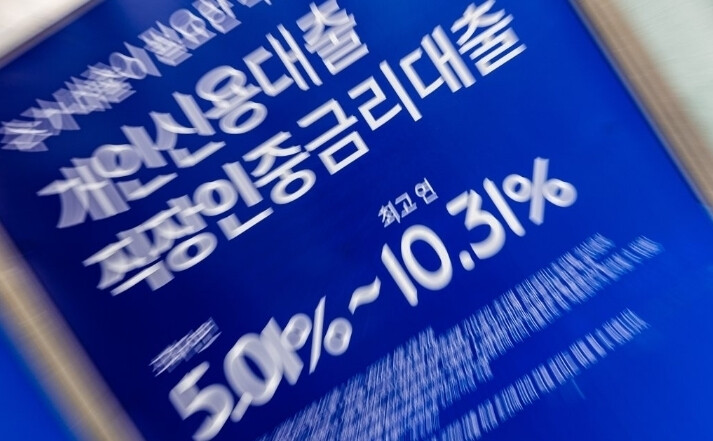
SEOUL, South Korea - South Korean banks experienced a renewed increase in loan delinquency rates in January, according to data released by the Financial Supervisory Service (FSS) on Thursday. The overall delinquency rate for won-denominated loans, defined as principal and interest overdue for more than one month, climbed to 0.53% at the end of January, marking a 0.09 percentage point jump from the 0.44% recorded in December. This reversal comes after a three-month period of increasing delinquency rates was briefly interrupted by a decline at the end of 2024.
The rise in the delinquency rate was fueled by a significant increase in newly overdue loans, which reached KRW 3.2 trillion in January, a KRW 700 billion surge compared to the previous month. Simultaneously, the resolution of existing delinquent loans saw a substantial decrease, falling by KRW 3.3 trillion month-on-month. The new delinquency rate also reflected this trend, rising to 0.13%, a 0.03 percentage point increase from December and returning to the level observed in January of the previous year.
The FSS attributed the January uptick to a "base effect" following the typical year-end decline in delinquency rates, which is often driven by banks intensifying their efforts to clear non-performing loans. However, the significant rise in new delinquencies suggests underlying pressures within the borrowing sectors.
Corporate and Household Loan Delinquencies Both on the Rise
A closer look at the data reveals that both corporate and household loan portfolios contributed to the overall increase. The delinquency rate for corporate loans stood at 0.61% at the end of January, up 0.11 percentage points from the same period last year. While large corporations saw a slight decrease in their delinquency rate (from 0.12% to 0.05% year-on-year), small and medium-sized enterprises (SMEs) experienced a notable increase, with their delinquency rate climbing from 0.60% to 0.77% over the past year. This suggests that smaller businesses may be facing greater financial strain in the current economic environment.
Similarly, the household loan delinquency rate rose to 0.43%, an increase from the 0.38% recorded in January 2024. Both major categories within household lending saw increased delinquency rates: mortgage loans rose from 0.25% to 0.29% year-on-year, and unsecured household loans saw a more significant jump from 0.74% to 0.84% over the same period. This indicates growing challenges for individual borrowers in meeting their debt obligations.
Outlook and Concerns
Despite the recent increase, the FSS noted that the current overall delinquency rate remains below the long-term average of 0.78% observed before the COVID-19 pandemic. However, the fact that the new delinquency rate has returned to the level of January last year raises concerns about a potential sustained upward trend.
"Although the current level is low compared to the long-term average before COVID-19, the new delinquency rate is similar to the level of the same month last year, so the upward trend in delinquency rates is expected to continue for the time being," the FSS cautioned in its statement.
Analysts suggest that factors such as the lingering effects of higher interest rates, coupled with potential economic slowdown, could be contributing to the rising delinquency rates. The increase in both household and corporate defaults warrants close monitoring by financial authorities to assess the potential impact on the stability of the banking sector and the broader economy. Further increases in delinquency rates could necessitate proactive measures from both lenders and policymakers to mitigate risks and support vulnerable borrowers.
[Copyright (c) Global Economic Times. All Rights Reserved.]






























